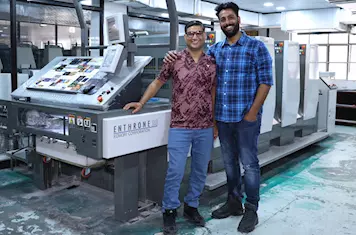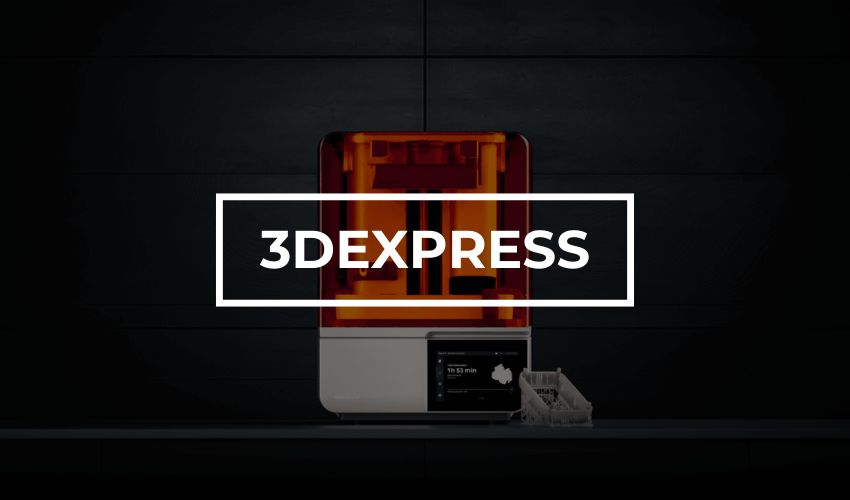A new kind of 3D-printed carrot, in the words of its Qatar-based inventors | Food News
Qatari students aim to make ‘food accessible to people all over the world’ with their newly invented 3D printer.
Two Qatari students created a 3D printing machine that prints vegetables in mass quantities. The hope is that this printer will provide a solution for the global food shortage.
Mohammad Annan, 20, and Lujain Al Mansoori, 21, use artificially grown vegetable cells and UV light to print a prototype of an edible carrot – something that has not been done with vegetables yet.
The information systems students at Doha’s Carnegie Mellon University won the top prize in the FoodTech category in the Business Incubation and Acceleration Hackathon, hosted last month by Qatar Development Bank.
Lab-grown vegetables
Annan Al Mansoori and their team built a 3D printer for themselves from scratch. They searched all over the world looking for parts to create a machine which could print a carrot in an innovative way.
So far, 3D-printed edibles were made with purees of vegetables or fruits – conventionally grown – to print food for those with eating disabilities, for instance. These methods are not suitable for mass production.
Annan and Al Mansoori built upon current masked stereolithography technology – which uses ultraviolet light to set the “inks” – for their 3D printer, which allows fast, bulk printing compared with pre-existing 3D printing methods.
“[O]It is a mass-production technology because it makes use of ultraviolet light. This type of printing has been done before using ultraviolet light with resin, but it’s never been done before using edible material,” Annan said.
![Carrot cells before solidifcation [Courtesy of Mohammad Annan]](https://www.aljazeera.com/wp-content/uploads/2023/09/WhatsApp-Image-2023-09-26-at-8.07.30-PM-1695983786.jpeg?w=770&resize=770%2C1586)
They try to explain the project in a simple and clear way, but admit that the most difficult part has been making it accessible to the layperson.
“[T]here is a learning curve to be able to communicate it clearly so that it’s not too alien,” Annan said. “How do we communicate this without seeming like we’re crazy?”
Just as healthy as a regular carrot
Only 2.5 percent of Qatar’s area is arable, and this is an issue many other countries also face.
“Qatar … heavily relies on imports,” Annan told Al Jazeera, adding that the country had recently been working to reduce this reliance and grow its own food, which had its challenges.
“To convert land that wasn’t even meant for agriculture to arable land is obviously a very high cost so we wanted to provide a solution … and we found that 3D printing and lab-grown vegetables or fruits can provide an alternative.”
In sterile conditions, the cells are multiplied using a technique called plant cell culture. These cells are then used to produce the UV-sensitive printing ink that is used in the machine. Cells can be molded into the shape of carrots or any other shape desired with the 3D Printer.
“We focused on carrots as a proof of concept because they are the most researched type of vegetable especially in terms of stem cells. But in the future we hope to look at fruits and vegetables that are very climate specific and rare to actually print those vegetables,” Al Mansoori said.
She added that their 3D-printed carrot has the same nutritional value as a conventionally grown carrot, as the soil’s environment is mimicked in the lab.
According to a recent United Nations Report published in July 2018, 735 million people face hunger. Since 2019, 122 millions more people have become hungry as a result the COVID-19 pandemic and other conflicts, including the war in Ukraine.
“The major drivers of food insecurity and malnutrition are our ‘new normal,’” the report said.
Al Mansoori stated that the cost of 3D printed food was a concern. However, since 3D carrots do not require large amounts of land, or maintenance costs, they can be more affordable.
“Currently, 3kg (6.6lb) [of carrots cost] 15 riyals ($4.12). We sell 3 kg [of 3D-printed carrots] Only carrots cost 10 riyals (US $2.75). When we aim to go onto climate-specific fruits and vegetables, the price will be even lower,” she said.
Al Mansoori said they hope 3D food printers will eventually be used everywhere including in restaurants, supermarkets, and hospitals, “making food accessible to people all over the world”.
![Mohammed Annan and Loujain Al Mansoori [Courtesy of Stephen MacNeil at Carnegie Mellon University]](https://www.aljazeera.com/wp-content/uploads/2023/09/WhatsApp-Image-2023-09-25-at-4.38.17-PM-1695979082.jpeg?w=770&resize=770%2C513)


